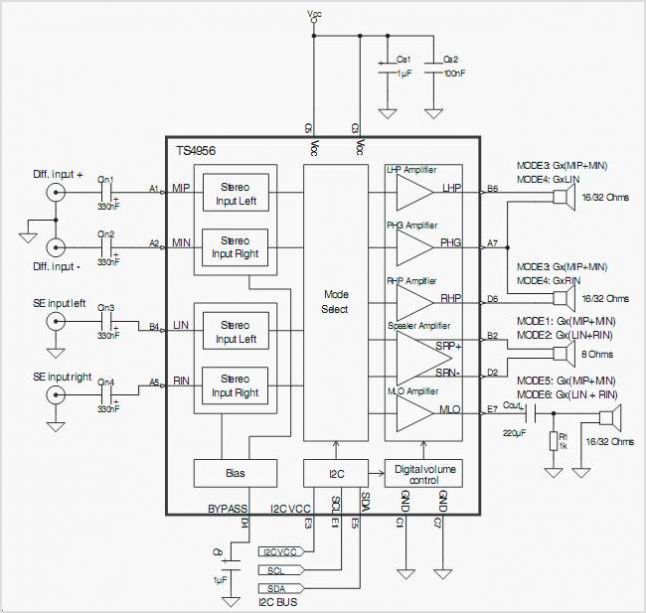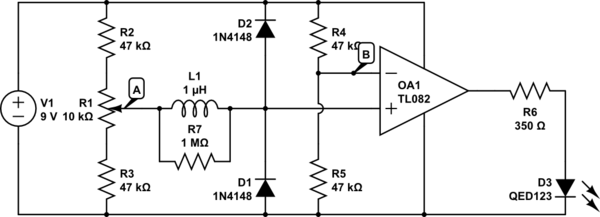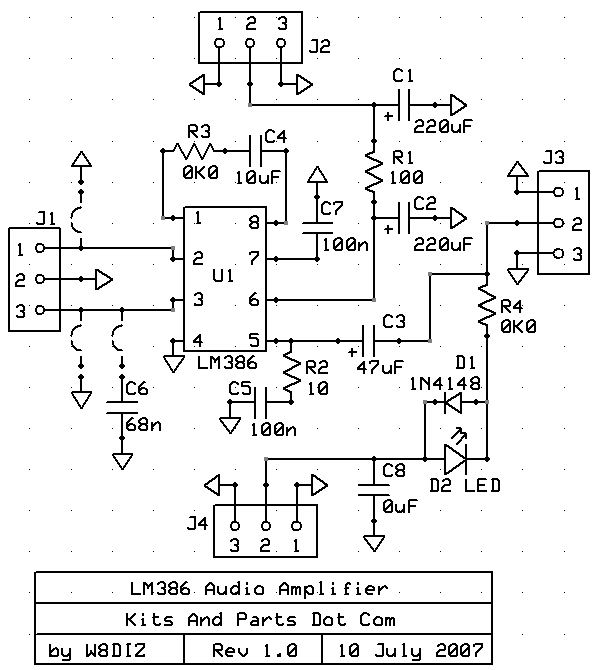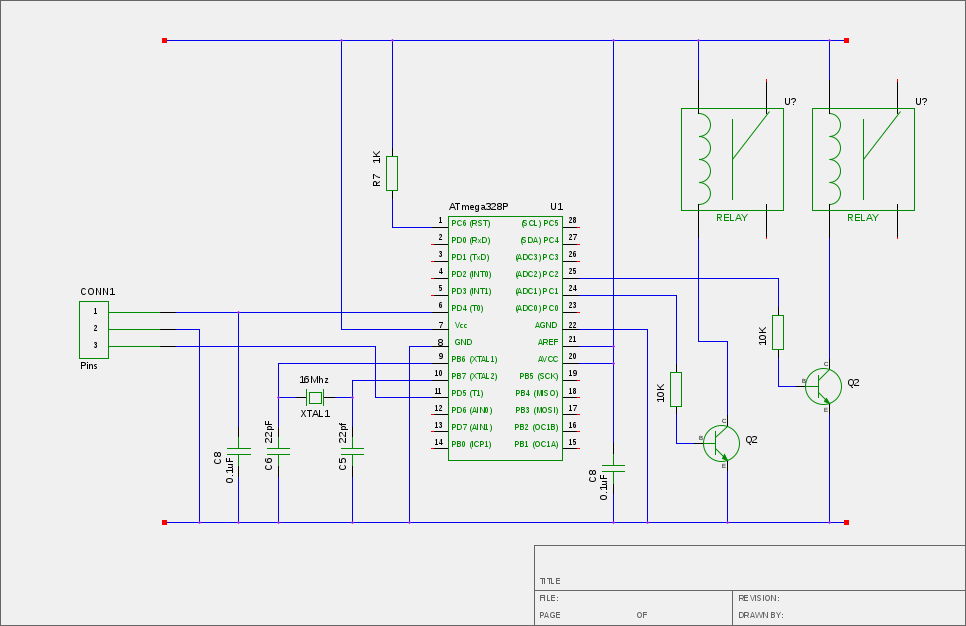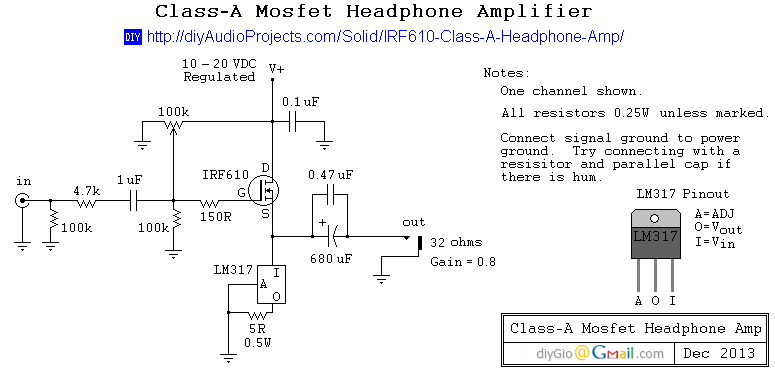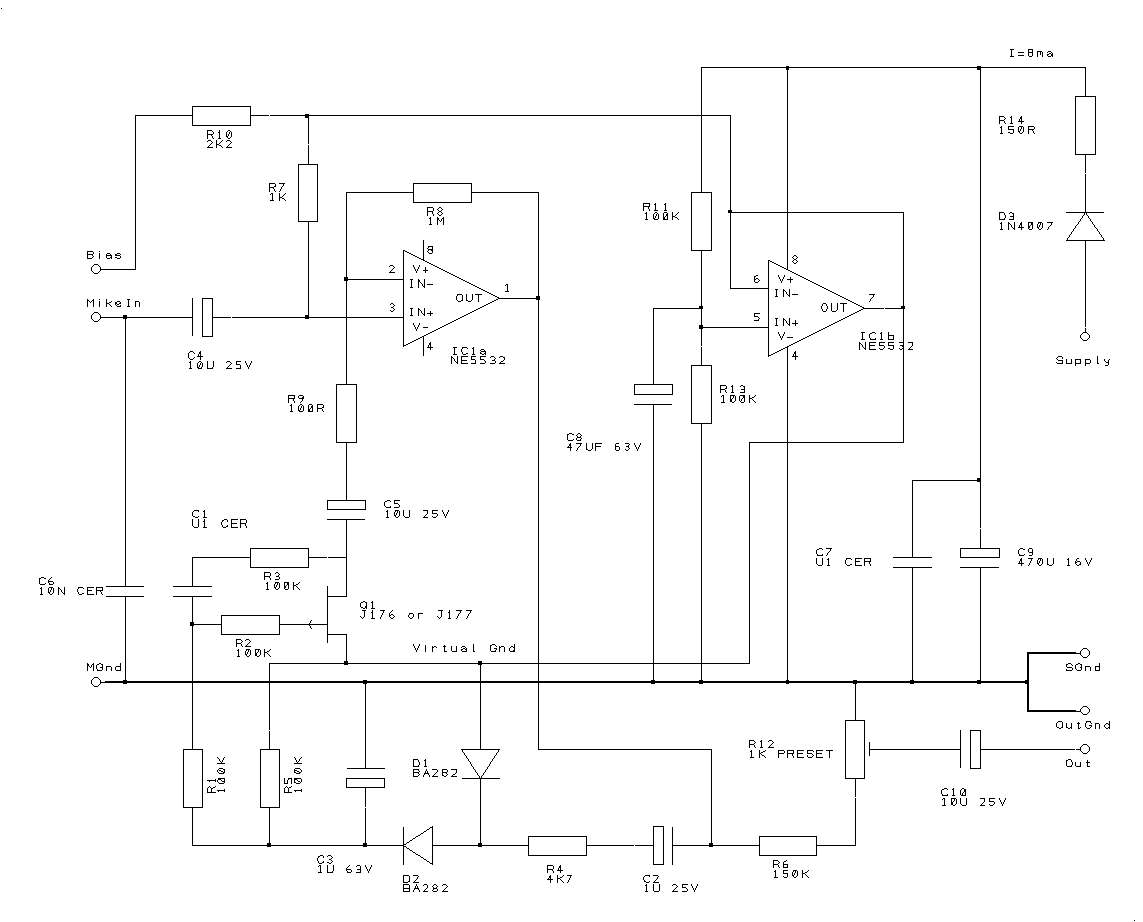
Mini Audio Booster Amplifier
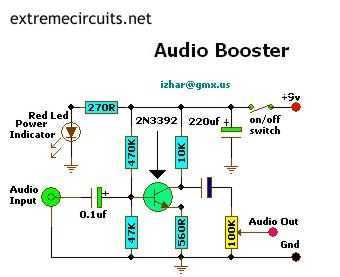
This small amplifier circuit is ideal for boosting small audio units.
The small amplifier circuit is designed to enhance the audio signals from low-output devices, such as microphones or portable music players. It typically employs a transistor or an operational amplifier (op-amp) as the main amplification component.
In a basic configuration, the circuit may consist of a power supply, input and output coupling capacitors, gain-setting resistors, and feedback elements. The power supply provides the necessary voltage for the circuit operation, while the input coupling capacitor blocks any DC component of the audio signal, allowing only the AC audio signal to pass through.
The gain of the amplifier can be adjusted by varying the resistor values in the feedback loop, which influences the overall amplification factor. For instance, in an op-amp configuration, the gain can be set using a resistor divider network.
Output coupling capacitors are also used to prevent any DC offset from reaching the next stage of the audio system, ensuring that only the amplified AC audio signal is transmitted. The circuit may also include bypass capacitors to stabilize the power supply and improve performance by filtering out noise.
Thermal management considerations are essential, especially in higher power applications, to prevent overheating of the active components. Proper layout design in the PCB can help minimize noise and interference, ensuring high fidelity in audio amplification.
In summary, this small amplifier circuit is a versatile solution for boosting audio signals, suitable for various applications in consumer electronics, portable devices, and audio processing equipment.This small amplifier circuit is ideal for boosting small audio units. 🔗 External reference
The small amplifier circuit is designed to enhance the audio signals from low-output devices, such as microphones or portable music players. It typically employs a transistor or an operational amplifier (op-amp) as the main amplification component.
In a basic configuration, the circuit may consist of a power supply, input and output coupling capacitors, gain-setting resistors, and feedback elements. The power supply provides the necessary voltage for the circuit operation, while the input coupling capacitor blocks any DC component of the audio signal, allowing only the AC audio signal to pass through.
The gain of the amplifier can be adjusted by varying the resistor values in the feedback loop, which influences the overall amplification factor. For instance, in an op-amp configuration, the gain can be set using a resistor divider network.
Output coupling capacitors are also used to prevent any DC offset from reaching the next stage of the audio system, ensuring that only the amplified AC audio signal is transmitted. The circuit may also include bypass capacitors to stabilize the power supply and improve performance by filtering out noise.
Thermal management considerations are essential, especially in higher power applications, to prevent overheating of the active components. Proper layout design in the PCB can help minimize noise and interference, ensuring high fidelity in audio amplification.
In summary, this small amplifier circuit is a versatile solution for boosting audio signals, suitable for various applications in consumer electronics, portable devices, and audio processing equipment.This small amplifier circuit is ideal for boosting small audio units. 🔗 External reference
